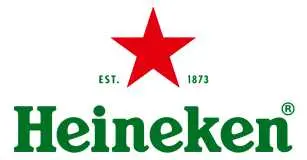Crop products are treated with specialized substances and mixtures called agrochemicals in order to improve and maintain their quality. They boost productivity and protect produce in commercial plantation agricultural fields and units from pests, weeds, and fungi. Insecticides, phosphatic, fungicides, herbicides, molluscicides, nematicides, and fertilizers with potassium and nitrogen content are the most commonly used agrochemicals.
Synthetic or biological mixes intended to improve crop quality and yield are known as agrochemicals. Fungicides and fertilizers are the two types of agrochemicals that exist. By providing soil and crops with essential nutrients, fertilizers enhance crop quality, whereas pesticides safeguard crops by eliminating, managing, or discouraging weeds and pests that pose a threat to them.
Oman Agrochemicals Market Driving Factors and Challenges
Growing Drivers: Increasing vegetable production in greenhouses Growing greenhouse vegetable production, a lack of arable land, increased investment in R&D, and the ease of use of agrochemicals are some of the factors that are expected to propel the growth of the agrochemicals market.
Quick inventions and improvements of new products Product innovations, such as the creation of sustainable bio-based agrochemicals, are another factor that stimulates growth. These substitutes are more economical, efficient, and environmentally friendly than traditional synthetic chemicals. Accordingly, there is an increasing demand for agrochemicals due to the public's growing inclination for natural food products.
Challenges: Additionally, stakeholders need to overcome a few challenges. One major challenge is the need to find a balance between modern agricultural practices and environmentally sound alternatives. The country's efforts to boost food production are raising concerns about the potential environmental effects of widespread agrochemical use. In order to balance boosting agricultural productivity with minimizing ecological damage, strict regulations and the adoption of ethical farming practices are required.
Impact of COVID-19 on Oman Agrochemicals Market
COVID-19 has an effect on agrochemical production and supply. The market for agrochemicals is among the industries that have been impacted by the worldwide pandemic. Because of a brief labour shortage and distribution bottlenecks, the number of workers needed to produce pesticides was much less than the number of workers available. Crop production has decreased as a result of a labour shortage on large-scale plantations, which has reduced the need for agrochemicals during the pandemic.
Oman Agrochemicals Market Key Players:
The market study provides market data by competitive landscape, revenue analysis, market segments and detailed analysis of key market players are; Bayer Crop Science, Dow Agrosciences, DuPont, Marrone Bio Innovations, Syngenta, Others.
Oman Agrochemicals Market Segmentation:
By Crop Type: Based on the Crop Type, Oman Agrochemicals Market is segmented as; Cereals, Pulses and oilseeds, Fruits and vegetables, Lawns and turfs, Others.
By Mode of Application: Based on the Mode of Application, Oman Agrochemicals Market is segmented as; Foliar, Fertigation, Others.
By Form: Based on the Form, Oman Agrochemicals Market is segmented as; Paints and coatings, Pesticides, Chemicals, Gasoline, Printing, Rubber, Leather.
By Type: Based on the Type, Oman Agrochemicals Market is segmented as; Pesticides, Fertilisers.
By Region: This research also includes data for Eastern Region, Western Region, Southern Region, Northern Region.
This study also encompasses various drivers and restraining factors of this market for the forecast period. Various growth opportunities are also discussed in the report.






















